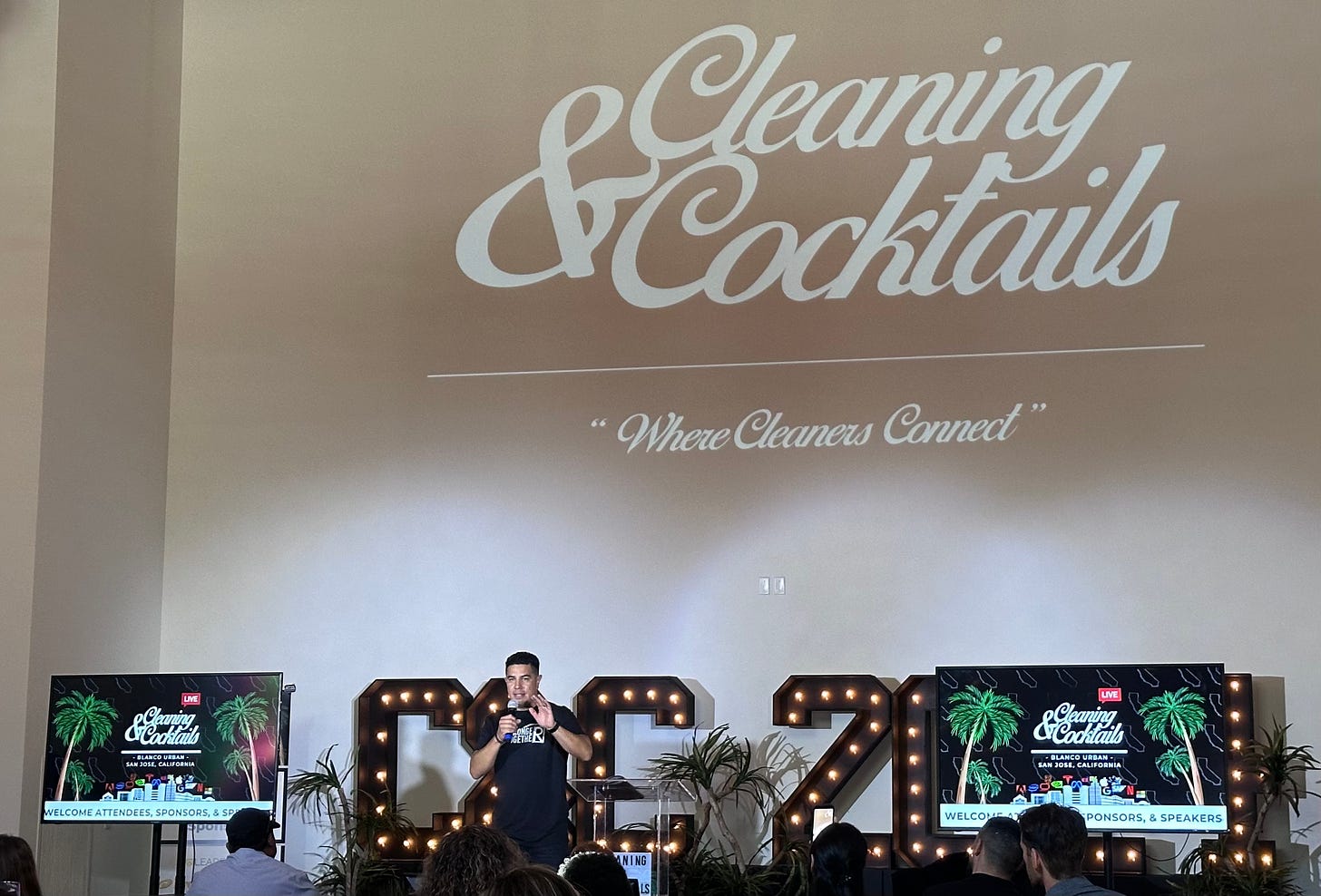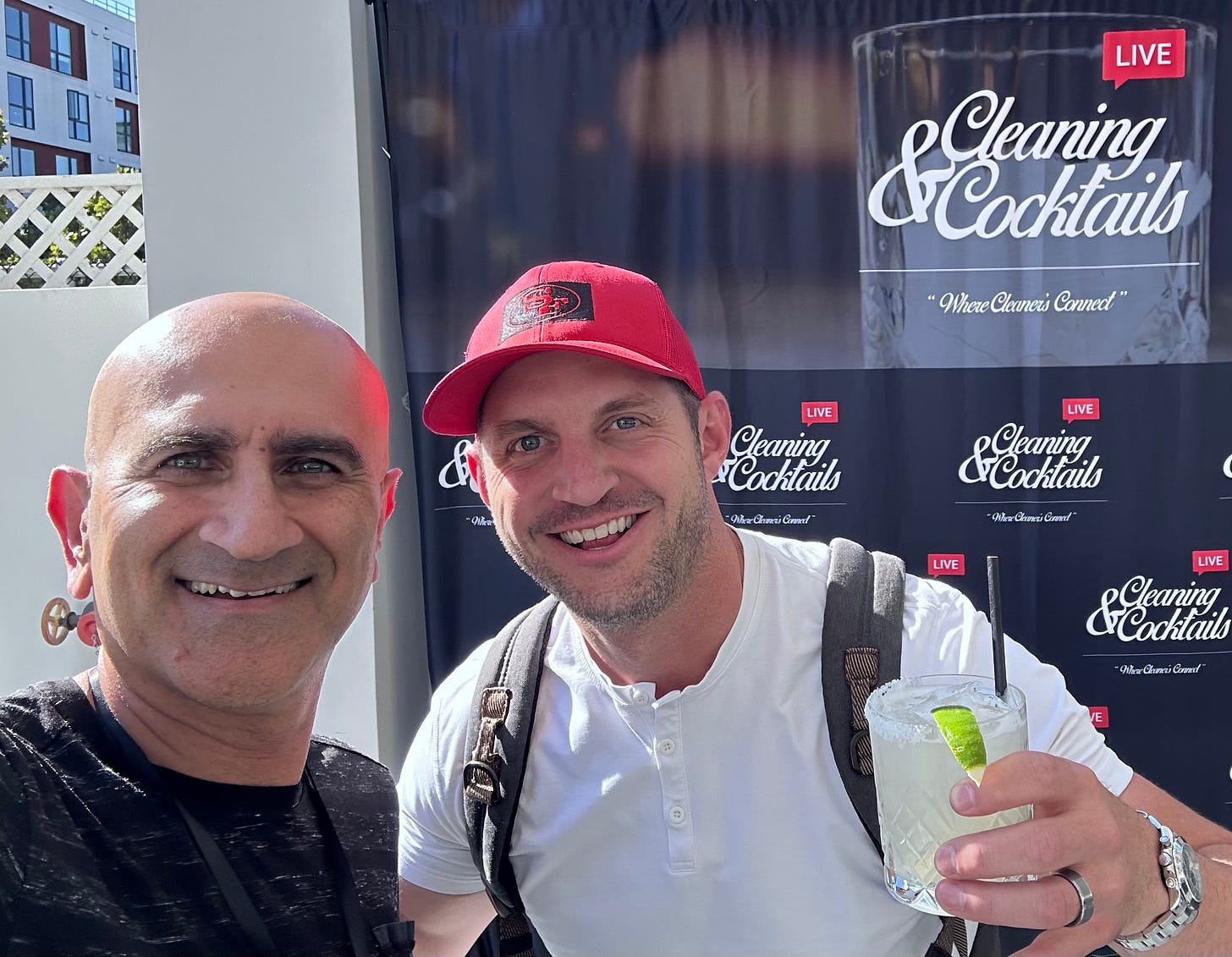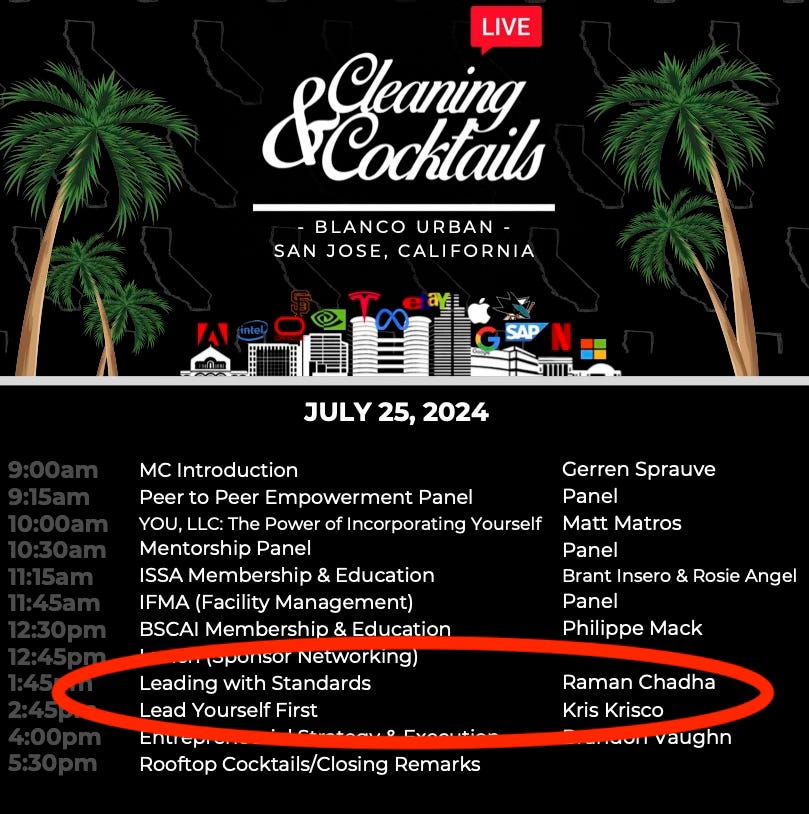What I Learned from My First Talk on Leading with Standards
Words, understanding, fun
Last week, I was invited to speak to a large audience for the first time to share my passion about standards. It was at the Cleaning & Cocktails conference in San Jose, CA, which brought together cleaning company leaders from across North America.
The title of my talk was “Leading with Standards,” with the following main points:
why standards are healthier than expectations
three key distinctions between expectations and standards
where leaders can easily begin setting standards in their organizations
Between the audience engagement and feedback I received after the talk, I learned a few valuable lessons.
YES, WORDS MATTER
After the conference ended, the closing keynote speaker (who was amazing) approached me and said he appreciated how intentional I was with my words. He told me that he could pick up the fact that I strategically chose certain words to make certain points, and that he further appreciated that I repeated those words over and over (on a side note, what he did was a master class in how to deliver an appreciation, a standard I will write about someday).
The point of his appreciation was spot on.
In preparing for the talk, I used the articles linked above as core content but I also significantly edited the language to try being crisp, concise, and more explanatory. One reason was that it helped me stay focused since I often insert extemporaneous thoughts while speaking.
A second reason was that I was concerned how my main ideas would come across verbally compared to in writing. The written word allows us to re-read anything that confuses us, resonates with us, or that we missed due to a distraction. Real-time listening, in a large audience, is different. We can’t “re-listen” to what we heard (or thought we heard) and most people are too polite, professional, or courteous to interrupt a speaker to explain/repeat something that was said.
A final reason that I was very careful with the words and language I used is because part of me still believes that a lot of people just don’t get the whole standards thing (more on that shortly). As a result, I weaved in a lot of examples and also asked the audience at different points to share expectations they have or what might be standards.
Ultimately, my most important takeaway was that choosing my words very carefully in a live speaking session does indeed matter; it helped reinforce this belief, one that I have previously written about.
As a former professor, current corporate trainer, and long-time public speaker, I’ve delivered thousands of talks and presentations in my career. I don’t believe I have ever paid so much attention to the specific words I used in a prepared talk. And I believe it paid off.
PEOPLE GOT IT (I THINK ;-)
At a few moments during my talk, I stopped and asked if I was being clear. I did not ask if my content “made sense.” This is a rather new standard I began using during the many Zoom sessions I led through the pandemic to learn whether people could understand what I was sharing.
An aside to explain that:
For many years, like other speakers, I used to ask half-heartedly, “Does this/that make sense?” Then, I realized that everyone has a different way of something “making sense,” and that it’s out of my control. What is in my control is whether or not I’m being clear with my message. It takes the pressure off the listener/receiver, and puts the pressure on the speaker/presenter.
As a result, during my talk last week, I asked “Is this coming across clearly?” or “Am I being clear?” While only 30-50% of the audience likely nodded their heads, gave a thumbs up, or verbally responded, no one responded that I wasn’t being clear.
What mattered more was the feedback I got immediately after my talk and then during a happy hour later that afternoon. In those 8-10 conversations, people either proactively told me they loved the idea of standards and it made sense to them (!) or I asked them if they understood the key distinctions of leading a life and team with standards vs. having expectations. Every person answered affirmatively.
Of course, I have no idea how everyone else felt about my clarity or whether they understood my main points. So I have to leave open the possibility that there’s still plenty of work to be done. After all, it was my first big talk.
IT WAS FUN!
This might be the most important lesson I learned. Not only was it fun crafting the talk, I really enjoyed sharing the idea of standards with so many people. And, after all, if we’re not having fun when sharing a passion, what’s the point?
One of the main drivers of my fun was that, just before I went onstage, a couple of the sponsors who gave plugs for their companies used the word “standard” or “standards” by coincidence. Furthermore, my good friend Kris Krisco (holding cocktail in earlier photo) did a workshop immediately following my talk and referenced the idea of standards a couple times.
This lesson has inspired me to more actively pursue speaking engagements on the topic of living and leading with standards. I’ve recognized that, in addition to the love I have for consistently writing about standards, I will probably love consistently speaking about it as well (as I’ve done with my other professional passion, emotionally intelligent leadership).
And finally, just outside the hotel where I was staying was a mural, with the phrase “Vida Abundante,” Spanish for “abundant life.” I’ve used the word “abundant” a number of times in recent years with friends and family to describe my life at this stage. But seeing that phrase beautifully painted on a wall as part of a beautiful work of art, close to my hotel, in a city where I was invited to do something for the very first time, was deeply inspiring and took my fun to an entirely different level.
If you or an organization you’re a part of has interest in a speaking engagement or podcast episode on the topic of living or leading with standards, please email me at settingstandards at substack dot com.




